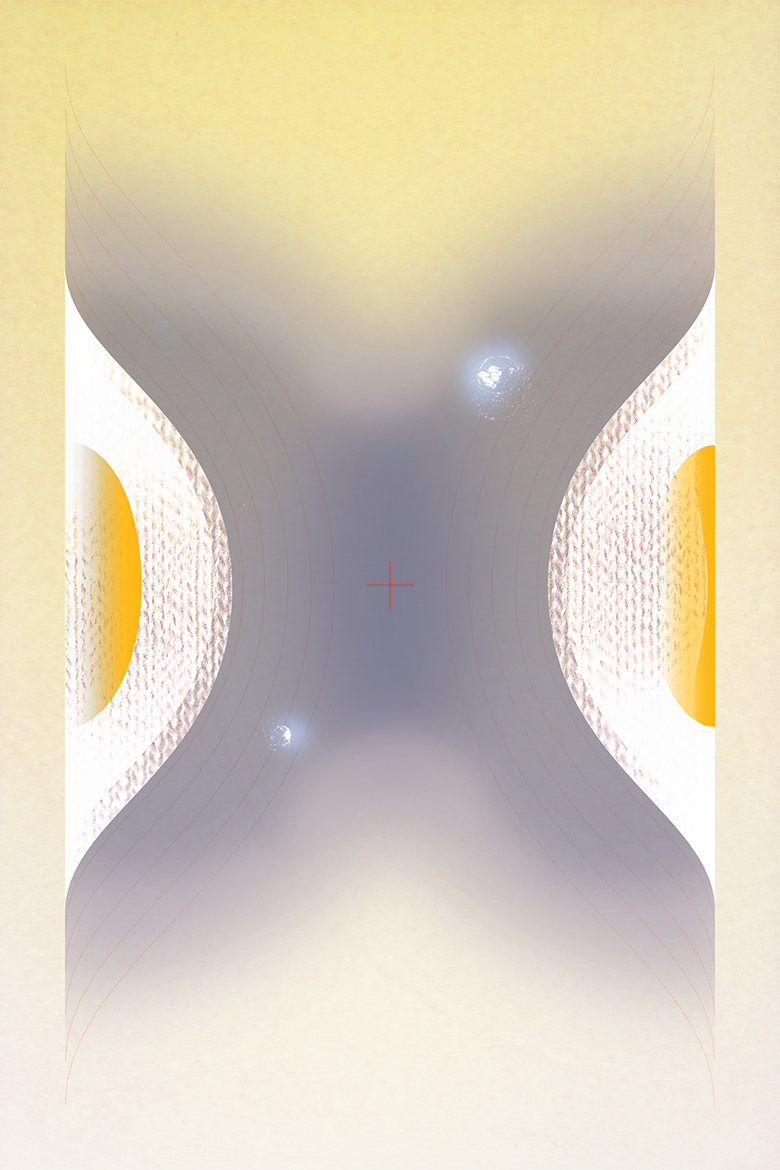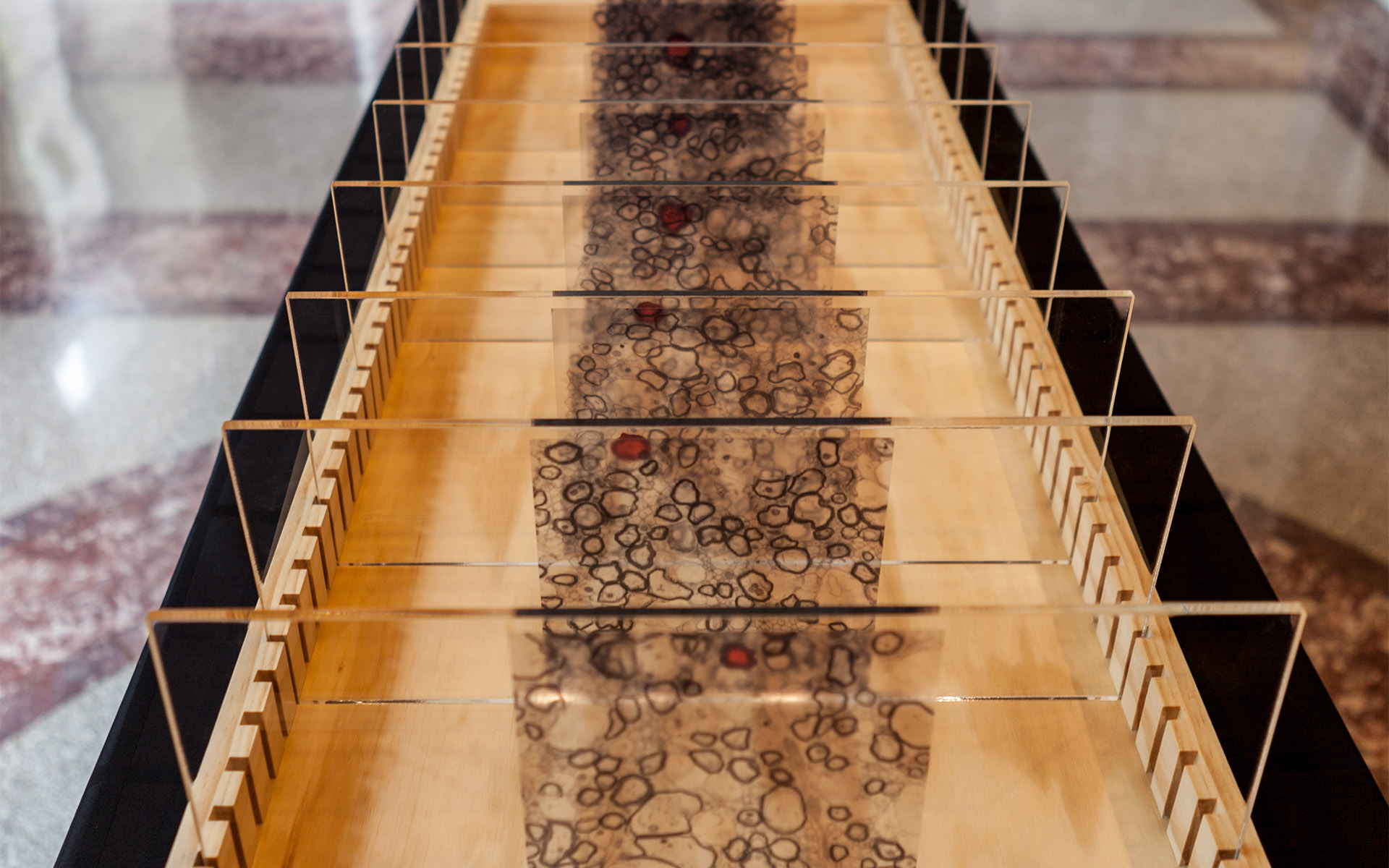
Scientist Collaborators M Taher A Saif, Onur Aydin, and Bashar Emon
M Taher A Saif Laboratory
Zeiss 710 Multiphoton Confocal Microscope
Funded by University of Illinois Urbana-Champaign
This image depicts how even a two-layer mask made of t-shirt material can reduce the number of air droplets by 95%. To recreate what happens during a cough or a sneeze, an inhaler was loaded with nanometer-sized fluorescent beads and pressed to create droplets. The droplets are ejected from the inhaler, after which they hit the fabric sample and are finally collected on a petri dish.
Face masks have been used since the middle ages: Doctors who treated patients suffering from the bubonic plague wore beak- like masks, which were supposedly filled with herbs such as clove or cinnamon. During the 1918 influenza epidemic, cities around the world passed mandatory masking orders. Historians have argued that, at the time, mask-wearing was embraced by the American public as “an emblem of public spiritedness and discipline.” Mask-wearing also skyrocketed in Asia during the early years of the 21st century with the outbreak of SARS and avian influenza. It is likely that this practice will continue long after the COVID pandemic comes to an end.
Sound by Anders Pollack

